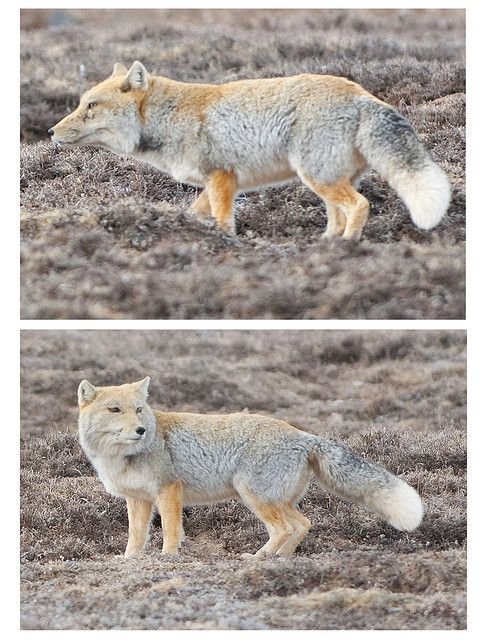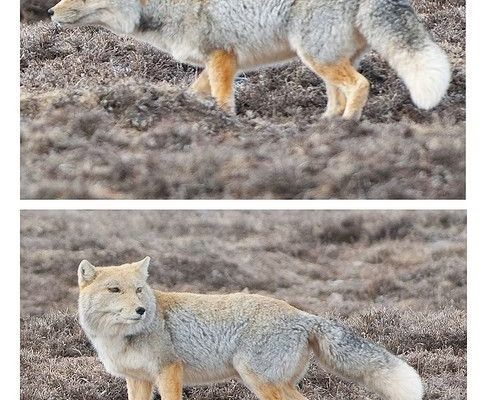
You might be wondering what makes the Tibetan fox so special. Beyond its striking appearance, this fox is adapted to live in some of the most challenging environments on Earth. It’s like a mountain climber who thrives in the highest peaks, where the air is thin and the weather can be unpredictable. With a range that stretches across vast territories, the Tibetan fox has quite an impressive lifestyle. So, let’s dive into where these fascinating creatures call home.
Understanding the Tibetan Habitat
The Tibetan fox primarily inhabits the Tibetan Plateau, often referred to as the “Roof of the World.” This area sits high above sea level, ranging from about 13,000 to 18,000 feet! Picture wide expanses of rolling hills, rocky outcrops, and a stunning backdrop of snow-capped peaks. The combination of altitude and geography creates a unique habitat that supports specialized wildlife, including the Tibetan fox.
These foxes prefer grasslands, steppes, and scrublands, thriving in the sparse vegetation that characterizes their home. Unlike forests, where cover is abundant and food sources can be hidden, the open plains allow these clever animals to spot their prey from a distance—pretty handy for a keen hunter! So in essence, Tibetan foxes have adapted to play hide and seek in an environment where they blend in with the rugged scenery.
Distribution of Tibetan Foxes
Tibetan foxes aren’t just restricted to Tibet. Their range extends into China, particularly in the provinces of Qinghai and Sichuan, as well as parts of India and Nepal. This broad distribution is essential for their survival, as it allows them to find the right habitats that suit their lifestyle.
You might be surprised to learn that these foxes can be found at different elevations, from the low-lying foothills to the more extreme altitudes of the plateau. Their ability to thrive in varied conditions is a testament to their adaptability. So when you’re exploring the Tibetan Plateau, keep an eye out—you might just spot one of these sly creatures on the move!
Weather and Climate: A Special Challenge
The climate of the Tibetan Plateau poses a significant challenge for its inhabitants. With temperatures that can plunge well below freezing, especially during the long winter months, Tibetan foxes have evolved to cope with the cold. Their thick fur keeps them warm, and they’re known for their ability to hunt even in harsh conditions.
Snow cover can blanket their territory in winter, making it tough for them to hunt. So, how do they manage? They rely on their keen sense of hearing and smell to locate prey like pikas and small rodents beneath the snow. It’s a bit like tuning in to a radio signal while the world around you is silent—these foxes are experts at finding hidden meals!
Interactions with Other Species
In their high-altitude homes, Tibetan foxes share their environment with a variety of other animals. They often compete with other predators like the Snow Leopard and different species of eagles for food. Imagine a bustling market filled with various vendors—each trying to attract customers. That’s how these animals interact in the wild; it’s a delicate balance of survival.
Interestingly, Tibetan foxes display a unique relationship with the Tibetan antelope. While these antelope graze on the grasslands, the foxes sometimes benefit from the antelope’s presence by hunting small mammals that get startled and flee from the antelopes. It’s a clever strategy that showcases the interconnectedness of the ecosystem where they live.
Conservation Status and Threats
Unfortunately, the Tibetan fox faces threats from habitat loss and climate change. As development expands into the Tibetan Plateau, the natural habitats these foxes rely on are being altered. It’s like trying to find your way out of a maze that keeps changing—challenging and often frustrating for wildlife.
Conservation efforts are crucial to ensure these incredible creatures remain part of our planet’s biodiversity. By preserving their habitats and raising awareness about their existence, we can help secure a future for the Tibetan fox. Support for local wildlife projects can make a difference, much like a community rallying together for a common cause.
The Tibetan fox is not just a fascinating animal; it’s a true survivor in one of the harshest environments on Earth. From the rugged terrains of the Tibetan Plateau to its interactions with other species, this elusive creature illustrates the complexity of life at high altitudes. Understanding where Tibetan foxes live and how they thrive offers us a glimpse into the intricate tapestry of nature.
As we think about the Tibetan fox, let’s appreciate the beauty of its habitat and the challenges it faces. We can all play a part in protecting these incredible creatures and the environment they call home. After all, every little effort counts in ensuring that the Tibetan fox continues to tread the high mountain pastures for generations to come.

